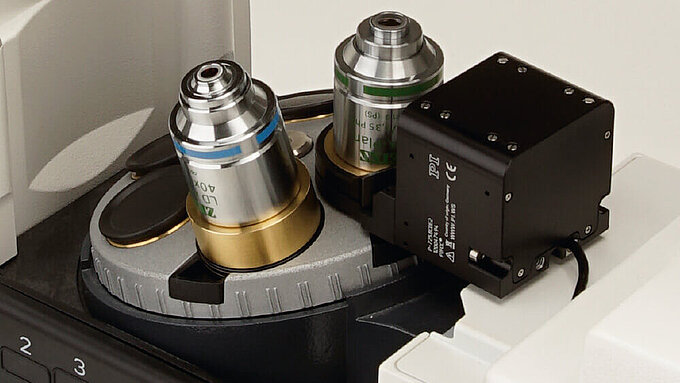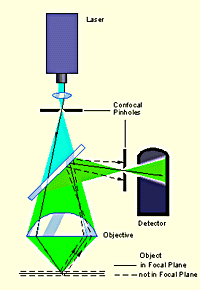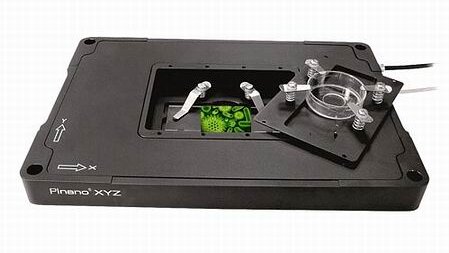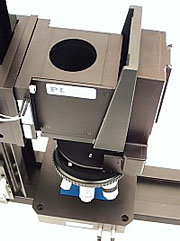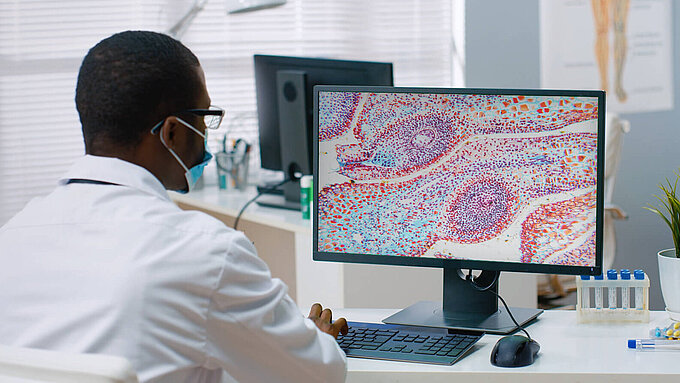Confocal Microscopy:
Nanometer Precision in Milliseconds: Ideal Application Field for Piezo NanoPositioners
Confocal microscopes provide significantly higher resolution than conventional microscopes. They also allow imaging of living cells (unlike electron microscopes) and are widely used in the fields of semiconductor testing, materials research and biology. Confocal microscopy is super-resolution microscopy technique based on scanning the specimen in X, Y and Z direction and capturing images at each individual XYZ coordinate. For high throughput and quality, the motion between the individual positions has to be fast and precise at the same time. Both requirements are met by PI Piezo NanoPositioning Systems as indicated in the examples which follow.
Fig. 1 shows the principle of a confocal microscope. The specimen is illuminated by a laser beam. Due to the small dimension of the illuminating light spot in the focal plane, stray light is minimized. Reflected light from all structures being out of focus is suppressed by a pinhole before reaching the detector. Only light returning from an exact plane passes through. For a complete 3 D image many slices have to be taken and superimposed by software. The depth of the focal plane is typically on the order of several 100 nanometers. For imaging small structures with optimal contrast, scanners (nanopositioners) with resolution of better than 20 nm should be used. Confocal microscopes use different types of scanning techniques: a) scanning the objective and b) scanning the sample. PI offers a variety of solutions for both versions:
PIFOC Microscope Objective-Scanners are simply screwed between the microscope and the objective. A variety of thread options allows adaptation to all standard microscopes. PIFOCs® are available with scanning ranges of 100 - 350 µm providing resolution of better than 1 nm.
POWFOC™ Turret-Scanners provide scanning ranges of 100 µm and 200 µm and sufficient force for scanning the complete turret with several objectives (Fig. 3).
For scanning the sample, the new P-500 miocroscopy nano-stages are recommended (Fig. 2). They provide scanning ranges to 200 µm and resolution of better than 1 nm (integrated capacitive position sensors).
This is a legacy product that may have limited availability or may have been replaced. Ask a PI engineer for an equivalent new model.
